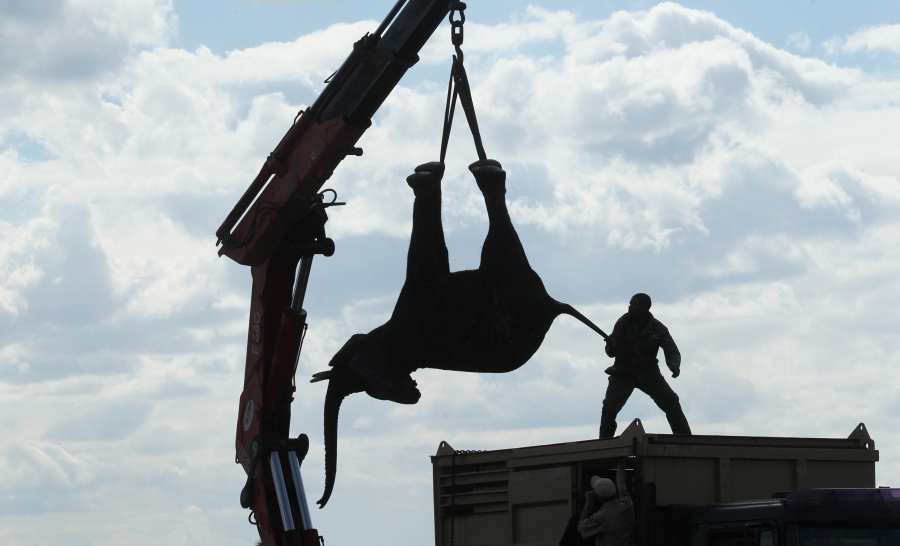The great beasts appear so helpless, dangling limply from the metal arm of a crane. From their uselessly slack heads hang flaccid trunks. It is the picture of an animal at the mercy of humans.
While the scene might make animal lovers want to call the local authorities, it’s simply a difficult aspect of an ultimately positive project. Just like we sometimes need surgery to get better, these elephants need to be relocated to keep their species alive.
The project is simple in theory and difficult in reality: African Parks, along with the Malawi Department of National Parks and Wildlife, are moving 500 elephants about 185 miles down the road from their current habitat.
Malawi is home to one of Africa’s densest human populations, and the resulting development is pushing elephants out. Not only are the animals’ habitats being slowly destroyed by the encroaching buildings and pollution that accompany human expansion, but African elephants are at a particularly high risk from poachers, who slaughter the behemoths for their twin ivory tusks.
As a result, less than 450,000 African elephants still remain, according to a press release from African Parks. Just a century prior, that number was as high as 5 million, according to the World Wildlife Federation.
African Parks, the nonprofit organization which runs nine parks in Malawi, has some good news: its recent focus on anti-poaching and “management of human-wildlife conflict” has created a surplus in the elephant population in two of its parks, Liwonde National Park and Majete Wildlife Reserve.
Others haven’t fared so well. According to the release, the Nkhotakota Wildlife Reserve has “for years been depleted of wildlife.” Its once-proud 1,500 elephants now number a meager 100.
The solution is to move the surplus elephants to a 16,000-hectare sanctuary in Nkhotakota, a trek of about 185 miles. There, conservationists hope the elephants will continue to reproduce, and those elephants can, in turn, be relocated to other parts of Africa that have suffered from heavy poaching.
To do so, of course, the organization must first collect the elephants.
That’s not an easy task.
According to National Geographic, African elephants can stretch 13 feet in length and weigh up to 14,000 pounds. For comparison’s sake, an average American sedan weighs around 4,000 pounds, according to Slate. In other words, each elephant can weigh more than three sedans stacked on top of each other.
Younger elephants weigh less, of course, but even an infant on the day of her birth weighs around 200 pounds.



